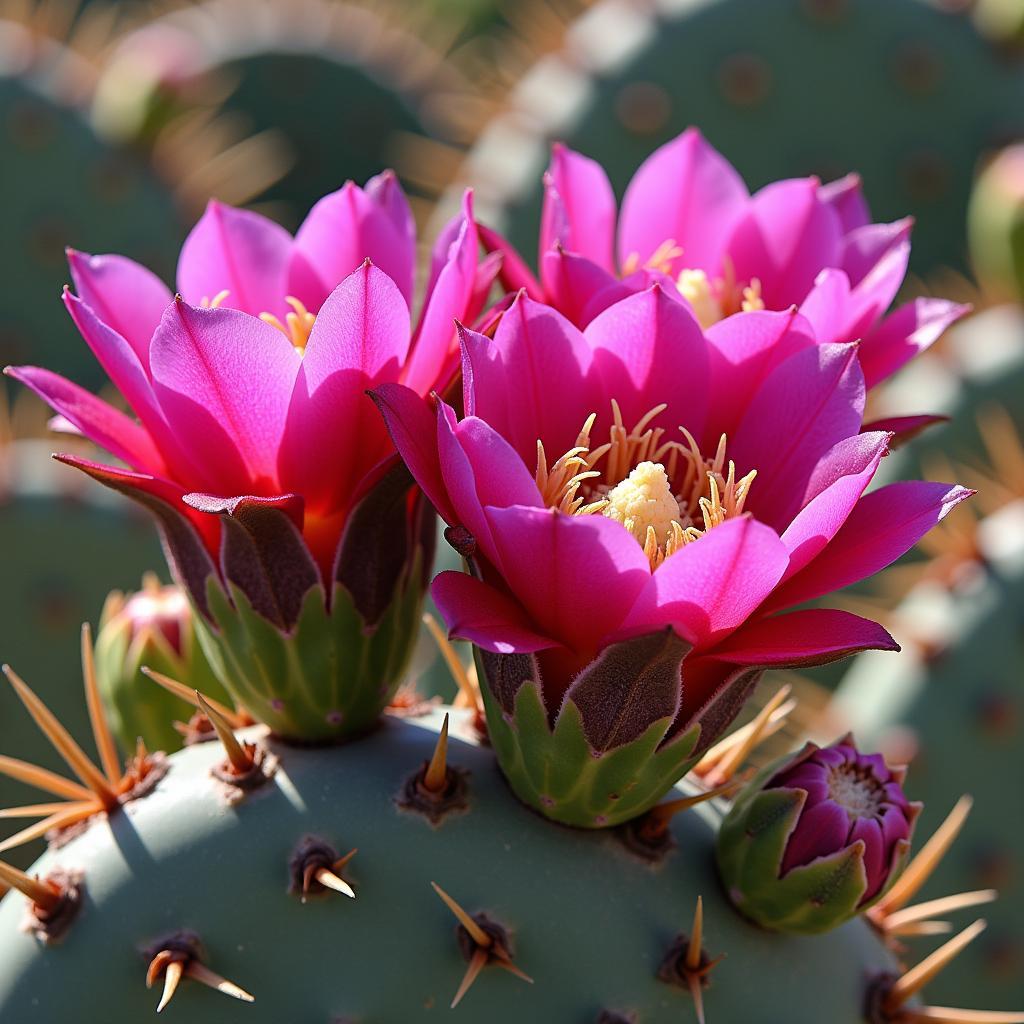Old Mexico Prickly Pear, with its vibrant magenta fruit and distinctive pads, is a true icon of the American Southwest. This cactus, known scientifically as Opuntia ficus-indica, thrives in arid landscapes, adding a splash of color to the dusty terrain. But the prickly pear is more than just a pretty face; it’s a versatile plant with a rich history and a range of culinary and medicinal uses.
 Old Mexico Prickly Pear Cactus in Bloom
Old Mexico Prickly Pear Cactus in Bloom
A History Rooted in the Desert
For centuries, indigenous peoples of Mexico and the southwestern United States have relied on the prickly pear for sustenance and medicine. Archaeological evidence suggests that the prickly pear was a staple food source as far back as 9,000 years ago. The pads, known as nopales, were consumed as a vegetable, while the sweet, juicy fruit, called tunas, provided a refreshing treat.
The prickly pear’s resilience in harsh conditions made it a valuable resource for desert dwellers. Its ability to store water in its pads and fruit provided a source of hydration during times of drought. Native communities also developed ingenious methods for removing the prickly spines, making the plant safe to handle and consume.
 Traditional Harvesting of Old Mexico Prickly Pear
Traditional Harvesting of Old Mexico Prickly Pear
From Desert Staple to Culinary Delicacy
Today, Old Mexico prickly pear has transcended its traditional uses and found its way onto modern menus. The nopales, with their slightly tart and earthy flavor, are often grilled, sautéed, or pickled. They add a unique texture and taste to salads, tacos, and stews.
The tunas, with their sweet and slightly tangy flavor, are enjoyed fresh, juiced, or made into jams, candies, and even alcoholic beverages. Prickly pear syrup, made from the concentrated juice of the fruit, is a popular sweetener in desserts and cocktails.
More Than Just a Food Source
Beyond its culinary applications, Old Mexico prickly pear boasts a range of medicinal properties. Traditionally, it has been used to treat a variety of ailments, including digestive issues, skin conditions, and inflammation.
Modern research has revealed that the prickly pear is rich in antioxidants, vitamins, and minerals. It is a good source of fiber, which can aid digestion and promote gut health. Studies have also shown that prickly pear extract may help lower blood sugar levels and cholesterol.
Conclusion
From its ancient roots in the desert to its modern-day resurgence as a culinary and health food, the Old Mexico prickly pear continues to captivate and nourish. Its unique flavor, versatility, and potential health benefits make it a true treasure of the Southwest.